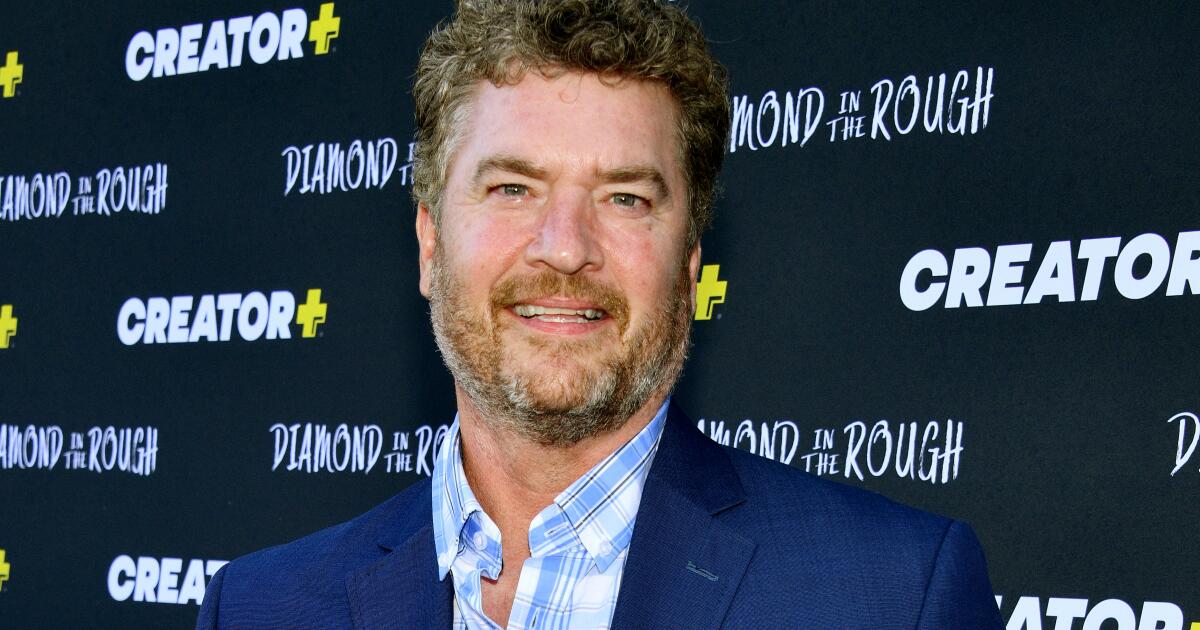Business
With fires burning again, is California becoming uninsurable?

Thursday marks the beginning of summer, but early wildfires have already scorched the outskirts of L.A. and the Bay Area. Many California homeowners find themselves more vulnerable than ever as major insurers abandon areas threatened by climate change-fueled fires. Gov. Gavin Newsom and state Insurance Commissioner Ricardo Lara have responded with efforts to ease regulations and boost coverage.
Insurance industry representative Rex Frazier argues that state leaders have the right idea: Burdensome regulations are making a difficult situation worse. But consumer advocate Jamie Court contends that the state needs to take a harder line by requiring coverage of homeowners who meet fire protection standards.
California’s sclerotic insurance bureaucracy isn’t helping anyone
By Rex Frazier
As the leader of an association of homeowners’ insurers, I frequently hear from anxious Californians who are losing their coverage and wondering whether the situation will get better. My answer is that I am not one of those who believes California is facing an uninsurable future. The problems we face are difficult but solvable.
The insurance challenges the state is facing today have roots in the past. While the giant wildfires of 2017 and 2018 had a huge impact, requiring insurers to pay claims equivalent to more than 20 years of profits, the state’s insurance problems predate the fires. California’s failure to update the old rules governing insurance rates have long prevented insurers from preparing for a hotter, drier future.
California’s laws are a national outlier. The rules for projecting wildfire losses, a crucial aspect of calculating insurance rates, are a case in point. California is the only state in the country that requires property insurers to project future wildfire losses based on average wildfire losses over the last 20 years, regardless of where they plan to do business. Every other state allows insurers to base their rates on where they intend to sell insurance, taking into account the degree of fire risk to the properties they plan to insure.
California is also a national outlier on rate approval in that it’s a “prior approval” state. That means an insurer must receive approval from the California Department of Insurance before it may increase or decrease rates.
While California law promises a 60-day approval period, it often takes six months or more to get permission to change rates. At times of high inflation, slow approvals require insurers to leave the highest-risk areas or face financial ruin.
A less visible but nevertheless critical issue is the financial well-being of the FAIR Plan, a pool of insurers providing last-resort coverage. The FAIR plan is growing well beyond its ability to pay claims for large fires. And if it runs out of money, it will charge insurers, as members of the pool, a fee in addition to claims from their own customers for the same fire. If that fee gets large enough, it could devastate insurers. We must address this.
Fortunately, Insurance Commissioner Ricardo Lara has recognized the need to fix these problems. His Sustainable Insurance Strategy would update California’s rate regulations and approval process while requiring insurers to make commitments to cover high-risk areas. The proposal is far from perfect, but we look forward to working with all the interested parties to increase insurance availability and restore the health of the market.
While state regulations and processes can be changed, we remain vulnerable to forces that are beyond our control. Inflation makes repairing and rebuilding homes much more expensive, driving up rates. Longer dry seasons increase the chances of devastating fires, having the same effect in the short term. We need a system that acknowledges these realities.
But raising rates is not a long-term solution. Reducing them over time will require consensus on how to handle combustible fuels near valuable property.
That will take a lot of time and effort. California homeowners’ insurers are ready to do our part to secure an insurable future for the state.
Rex Frazier is the president of the Personal Insurance Federation of California.

Newsom needs to look out for homeowners, not insurance companies
By Jamie Court
Home insurance companies have put Californians in a bind by refusing to sell new policies or renew many customers, leaving them with few coverage options. That has driven more homeowners into the high-cost, low-benefit FAIR Plan, a pool of insurers required to provide last-resort coverage.
Gov. Gavin Newsom recently announced legislation to allow insurance companies to hike rates more quickly in an effort to woo them back to the state. While that will certainly leave Californians paying higher rates, it’s not likely to get more people covered.
Insurance companies are refusing to write new policies despite substantial recent rate hikes — an average of 20% for State Farm and 37% for Farmers, for example. What has them spooked is greater exposure through the FAIR Plan, which increasingly covers expensive homes in wildfire-prone areas. Insurers are on the hook for FAIR Plan claims, and their exposure increases with market participation, so they limit their participation.
Only freeing people from the FAIR Plan will solve this. The most practical way to do that is to require insurers to cover people who harden their homes against fire. We have mandatory health and auto insurance, so why shouldn’t we have it for homes that meet standards?
Hardening is expensive enough that most homeowners are unlikely to do it without guaranteed coverage. Mandating insurance is therefore the best way to mitigate wildfire risks.
Mitigation efforts are already working, with major claim events dwindling in recent years. Moreover, insurers recovered billions from the utilities responsible for major fire losses in 2017 and 2018.
The current crisis was precipitated not so much by wildfires as by investment losses and rising construction costs. Insurers responded by tightening underwriting and raising rates.
Insurance companies got their hikes, but they refuse to write new business here until they get more. Unfortunately, Newsom and Insurance Commissioner Ricardo Lara are ready to give them what they want.
Last week, Lara proposed regulations attempting to address the crisis. Echoing a legislative proposal that failed last year, they would allow companies to raise rates based on black-box climate models. Florida tried a similar approach, and its rates are now about double California’s. Florida’s insurer of last resort covers 20% of its homeowners, roughly five times the share in California.
The proposed regulations purport to require insurers to increase sales to homeowners in “distressed areas” by 5%. However, they would not require them to charge prices consumers can afford. The requirement to cover these areas could also be waived if an insurer shows it’s “taking reasonable steps to fulfill its insurer commitment.” And the plan gives companies two years to comply but lets them start charging all policyholders higher rates immediately.
Newsom cheered the proposal, essentially arguing that California’s insurance rates are too damn low. He didn’t mention that California insurers’ profits have generally outpaced the national average over the last 20 years.
Newsom’s latest legislative proposal would limit public participation in rate-setting by cutting out so-called intervenors such as Consumer Watchdog, which can challenge unnecessary increases and has saved consumers more than $6 billion over 22 years.
Throwing more money at insurers won’t end the crisis; requiring them to cover responsible homeowners will.
Jamie Court is the president of the nonprofit Consumer Watchdog.

Business
A tale of two Ralphs — Lauren and the supermarket — shows the reality of a K-shaped economy

John and Theresa Anderson meandered through the sprawling Ralph Lauren clothing store on Rodeo Drive, shopping for holiday gifts.
They emerged carrying boxy blue bags. John scored quarter-zip sweaters for himself and his father-in-law, and his wife splurged on a tweed jacket for Christmas Day.
“I’m going for quality over quantity this year,” said John, an apparel company executive and Palos Verdes Estates resident.
They strolled through the world-famous Beverly Hills shopping mecca, where there was little evidence of any big sales.
John Anderson holds his shopping bags from Ralph Lauren and Gucci at Rodeo Drive.
(Juliana Yamada / Los Angeles Times)
One mile away, shoppers at a Ralphs grocery store in West Hollywood were hunting for bargains. The chain’s website has been advertising discounts on a wide variety of products, including wine and wrapping paper.
Massi Gharibian was there looking for cream cheese and ways to save money.
“I’m buying less this year,” she said. “Everything is expensive.”
-
Share via
The tale of two Ralphs shows how Americans are experiencing radically different realities this holiday season. It represents the country’s K-shaped economy — the growing divide between those who are affluent and those trying to stretch their budgets.
Some Los Angeles residents are tightening their belts and prioritizing necessities such as groceries. Others are frequenting pricey stores such as Ralph Lauren, where doormen hand out hot chocolate and a cashmere-silk necktie sells for $250.

People shop at Ralphs in West Hollywood.
(Juliana Yamada / Los Angeles Times)
In the K-shaped economy, high-income households sit on the upward arm of the “K,” benefiting from rising pay as well as the value of their stock and property holdings. At the same time, lower-income families occupy the downward stroke, squeezed by inflation and lackluster income gains.
The model captures the country’s contradictions. Growth looks healthy on paper, yet hiring has slowed and unemployment is edging higher. Investment is booming in artificial intelligence data centers, while factories cut jobs and home sales stall.
The divide is most visible in affordability. Inflation remains a far heavier burden for households lower on the income distribution, a frustration that has spilled into politics. Voters are angry about expensive rents, groceries and imported goods.
“People in lower incomes are becoming more and more conservative in their spending patterns, and people in the upper incomes are actually driving spending and spending more,” said Kevin Klowden, an executive director at the Milken Institute, an economic think tank.
“Inflationary pressures have been much higher on lower- and middle-income people, and that has been adding up,” he said.
According to a Bank of America report released this month, higher-income employees saw their after-tax wages grow 4% from last year, while lower-income groups saw a jump of just 1.4%. Higher-income households also increased their spending year over year by 2.6%, while lower-income groups increased spending by 0.6%.
The executives at the companies behind the two Ralphs say they are seeing the trend nationwide.
Ralph Lauren reported better-than-expected quarterly sales last month and raised its forecasts, while Kroger, the grocery giant that owns Ralphs and Food 4 Less, said it sometimes struggles to attract cash-strapped customers.
“We’re seeing a split across income groups,” interim Kroger Chief Executive Ron Sargent said on a company earnings call early this month. “Middle-income customers are feeling increased pressure. They’re making smaller, more frequent trips to manage budgets, and they’re cutting back on discretionary purchases.”

People leave Ralphs with their groceries in West Hollywood.
(Juliana Yamada / Los Angeles Times)
Kroger lowered the top end of its full-year sales forecast after reporting mixed third-quarter earnings this month.
On a Ralph Lauren earnings call last month, CEO Patrice Louvet said its brand has benefited from targeting wealthy customers and avoiding discounts.
“Demand remains healthy, and our core consumer is resilient,” Louvet said, “especially as we continue … to shift our recruiting towards more full-price, less price-sensitive, higher-basket-size new customers.”
Investors have noticed the split as well.
The stock charts of the companies behind the two Ralphs also resemble a K. Shares of Ralph Lauren have jumped 37% in the last six months, while Kroger shares have fallen 13%.
To attract increasingly discerning consumers, Kroger has offered a precooked holiday meal for eight of turkey or ham, stuffing, green bean casserole, sweet potatoes, mashed potatoes, cranberry and gravy for about $11 a person.
“Stretch your holiday dollars!” said the company’s weekly newspaper advertisement.

Signs advertising low prices are posted at Ralphs.
(Juliana Yamada / Los Angeles Times)
In the Ralph Lauren on Rodeo Drive, sunglasses and polo shirts were displayed without discounts. Twinkling lights adorned trees in the store’s entryway and employees offered shoppers free cookies for the holidays.
Ralph Lauren and other luxury stores are taking the opposite approach to retailers selling basics to the middle class.
They are boosting profits from sales of full-priced items. Stores that cater to high-end customers don’t offer promotions as frequently, Klowden of the Milken Institute said.
“When the luxury stores are having sales, that’s usually a larger structural symptom of how they’re doing,” he said. “They don’t need to be having sales right now.”
Jerry Nickelsburg, faculty director of the UCLA Anderson Forecast, said upper-income earners are less affected by inflation that has driven up the price of everyday goods, and are less likely to hunt for bargains.
“The low end of the income distribution is being squeezed by inflation and is consuming less,” he said. “The upper end of the income distribution has increasing wealth and increasing income, and so they are less affected, if affected at all.”
The Andersons on Rodeo Drive also picked up presents at Gucci and Dior.
“We’re spending around the same as last year,” John Anderson said.
At Ralphs, Beverly Grove resident Mel, who didn’t want to share her last name, said the grocery store needs to go further for its consumers.
“I am 100% trying to spend less this year,” she said.
Business
Instacart ends AI pricing test that charged shoppers different prices for the same items

Instacart will stop using artificial intelligence to experiment with product pricing after a report showed that customers on the platform were paying different prices for the same items.
The report, published this month by Consumer Reports and Groundwork Collaborative, found that Instacart sometimes offered as many as five different prices for the same item at the same store and on the same day.
In a blog post Monday, Instacart said it was ending the practice effective immediately.
“We understand that the tests we ran with a small number of retail partners that resulted in different prices for the same item at the same store missed the mark for some customers,” the company said. “At a time when families are working exceptionally hard to stretch every grocery dollar, those tests raised concerns.”
Shoppers purchasing the same items from the same store on the same day will now see identical prices, the blog post said.
Instacart’s retail partners will still set product prices and may charge different prices across stores.
The report, which followed more than 400 shoppers in four cities, found that the average difference between the highest and lowest prices for the same item was 13%. Some participants in the study saw prices that were 23% higher than those offered to other shoppers.
At a Safeway supermarket in Washington, D.C., a dozen Lucerne eggs sold for $3.99, $4.28, $4.59, $4.69 and $4.79 on Instacart, depending on the shopper, the study showed.
At a Safeway in Seattle, a box of 10 Clif Chocolate Chip Energy bars sold for $19.43, $19.99 and $21.99 on Instacart.
The study found that an individual shopper on Instacart could theoretically spend up to $1,200 more on groceries in one year if they had to deal with the price differences observed in the pricing experiments.
The price experimentation was part of a program that Instacart advertised to retailers as a way to maximize revenue.
Instacart probably began adjusting prices in 2022, when the platform acquired the artificial intelligence company Eversight, whose software powers the experiments.
Instacart claimed that the Eversight experimentation would be negligible to consumers but could increase store revenue by up to 3%.
“Advances in AI enable experiments to be automatically designed, deployed, and evaluated, making it possible to rapidly test and analyze millions of price permutations across your physical and digital store network,” Instacart marketing materials said online.
The company said the price chranges were not dynamic pricing, the practice used by airlines and ride-hailing services to charge more when demand surges.
The price changes also were not based on shoppers’ personal information such as income, the company said.
“American grocery shoppers aren’t guinea pigs, and they should be able to expect a fair price when they’re shopping,” Lindsey Owens, executive director of Groundwork Collaborative, said in an interview this month.
Shares of Instacart fell 2% on Monday, closing at $45.02.
Business
Apple, Google and others tell some foreign employees to avoid traveling out of the country

Big Tech companies, including Apple, Google, Microsoft, and ServiceNow, have warned employees on visas to avoid leaving the country amid uncertainty about changing immigration policy and procedures.
Following an attack on National Guard members in Washington, the Trump administration expanded travel bans earlier this month, and beefed up vetting and data collection for visa applicants. The new policy now includes screening the social media history of some visa applicants and their dependents.
Soon after the announcement, U.S. consulates began rescheduling appointments for future dates, some as late as summer 2026, leaving employees who required appointments unable to return.
“Please be aware that some U.S. Embassies and Consulates are experiencing significant visa stamping appointment delays, currently reported as up to 12 months,” noted an email sent by Berry Appleman & Leiden LLC, the immigration firm that represents Google. The advisory also recommended “avoiding international travel at this time.”
Business Insider earlier reported on the travel advisories.
Microsoft’s memo noted that much of the rescheduling is occurring in India, in cities such as Chennai and Hyderabad, and that new stamping dates are as far out as June 2026.
The company advised employees with valid work authorization who were traveling outside the U.S. for stamping to return before their current visa expires. Those still in the U.S. scheduling upcoming travel for visa stamping should “strongly consider” changing their travel plans.
Apple’s immigration team also recommended that employees without a valid H1-B visa stamp avoid international travel for now.
ServiceNow, a business software company, similarly issued an advisory recommending that those with valid visa stamps return to the U.S.
Microsoft declined to comment on its memo. Apple, Google and ServiceNow did not immediately respond to requests for comment.
Companies warned that delays due to enhanced screening is for H-1B, H-4, F, J and M visas.
H-1B is a high-skilled immigration visa program that allows employers to sponsor work visas for individuals with specialized skills. The program, capped at 85,000 new visas per year, is a channel for American tech giants to source skilled workers, such as software engineers.
Big Tech companies such as Amazon, Google, and Meta have consistently topped the charts in terms of the number of H-1B approvals, with Indian nationals as the largest beneficiaries of the program, accounting for 71% of approved H-1 B petitions.
H-1B visas are awarded through a lottery system, which its critics say has been exploited by companies to replace American workers with cheap foreign labor.
In September, the Trump administration announced a $100,000 fee for new H-1B employee hires. But after severe pushback, it clarified that it applied only to employers seeking to use the H-1B visa to hire foreign nationals not already in the U.S.
The H-1B program is an issue that has not only animated the right but also splintered it. Those on the tech-right, such as Elon Musk and David Sacks, are strongly in favor of strengthening skilled immigration, while the core MAGA base is vehemently opposed to it.
Proponents of the program often highlight that skilled worker immigration made the U.S a technological leader, and nearly half of the fortune 500 companies were founded by immigrants or their children, creating jobs for native-born Americans.
-

 Entertainment4 days ago
Entertainment4 days agoHow the Grinch went from a Yuletide bit player to a Christmas A-lister
-

 Connecticut4 days ago
Connecticut4 days agoSnow Accumulation Estimates Increase For CT: Here Are The County-By-County Projections
-

 Entertainment5 days ago
Entertainment5 days agoPat Finn, comedy actor known for roles in ‘The Middle’ and ‘Seinfeld,’ dies at 60
-

 Milwaukee, WI5 days ago
Milwaukee, WI5 days ago16 music and theater performances to see in Milwaukee in January 2026
-

 World1 week ago
World1 week agoPutin says Russia won’t launch new attacks on other countries ‘if you treat us with respect’
-

 Indianapolis, IN2 days ago
Indianapolis, IN2 days agoIndianapolis Colts playoffs: Updated elimination scenario, AFC standings, playoff picture for Week 17
-

 Southeast3 days ago
Southeast3 days agoTwo attorneys vanish during Florida fishing trip as ‘heartbroken’ wife pleads for help finding them
-

 World3 days ago
World3 days agoSnoop Dogg, Lainey Wilson, Huntr/x and Andrea Bocelli Deliver Christmas-Themed Halftime Show for Netflix’s NFL Lions-Vikings Telecast



















